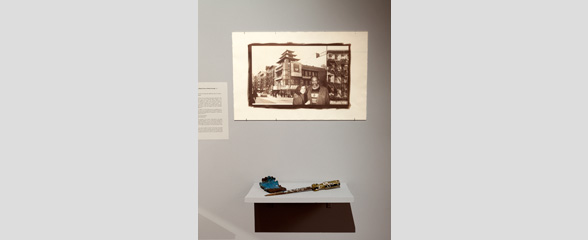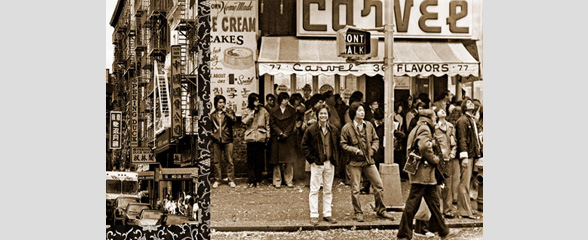Art and artist

2013.022.007 Oral History Interview with Marilyn Sontag and Daniel Carter
Husband and wife Daniel Carter and Marilyn Sontag sit down with Tomie Arai to discuss their lives living at 218 Centre Street, and all of the changes in the neighborhood that they have watched since they moved in in 1970. They begin by discussing their lives prior to their move to New York City, and how they found their apartment, which was actually designated as an artist residence, through word of mouth. Marilyn is a visual artist, and Daniel is a composer and musician. The couple discuss the changing borders of Chinatown over the years, and they describe the location of their residence as right on the border between what is left of Little Italy and Chinatown. When Marilyn and Daniel elaborate on the changes in Chinatown through the years, they stress that the main change is the expansion of Chinatown. They share anecdotes from their life in the seventies and share stories behind artifacts that they kept for sentimental reasons, such as old street signs, a piece of cast iron from their building after a remodel, and photographs, among other treasures. They discuss what it has been like to be a part of the Chinatown community peripherally, and they share many anecdotes about their life together living in the same place for 45 years.

2013.022.009 Oral History Interview with Wing Lee
Tomie Arai and Janice Lau sit down with Wing Lee to discuss his life and his experience growing up in and around New York Citys Chinatown in the 60s through the 80s. Wing talks about what it was like as a kid being raised in the US with Chinese parents, and growing up on the streets of Chinatown. He talks about the schools he went to in the area, and all the spots the neighborhood kids used to hang out. Later on in his late teenage years, he describes the experience at a popular neighborhood bar called Grandpas. Wing describes the atmosphere at Grandpas, the regulars there, and how he was eventually asked to design a t-shirt for the bar as well as a large mirror to hang in the space. He touches on the gang presence in Chinatown in the 70s, and describes the changes he has seen in the neighborhood since his youth. He feels hopeful for the future of Chinatown and believes that the quality of life has improved for your average Chinatown resident. He is excited that the area is now taken seriously politically and that Chinatown has Asian and Chinese representation within the city government. Wing is an artist, and he is excited to see the museum documenting this important community history.